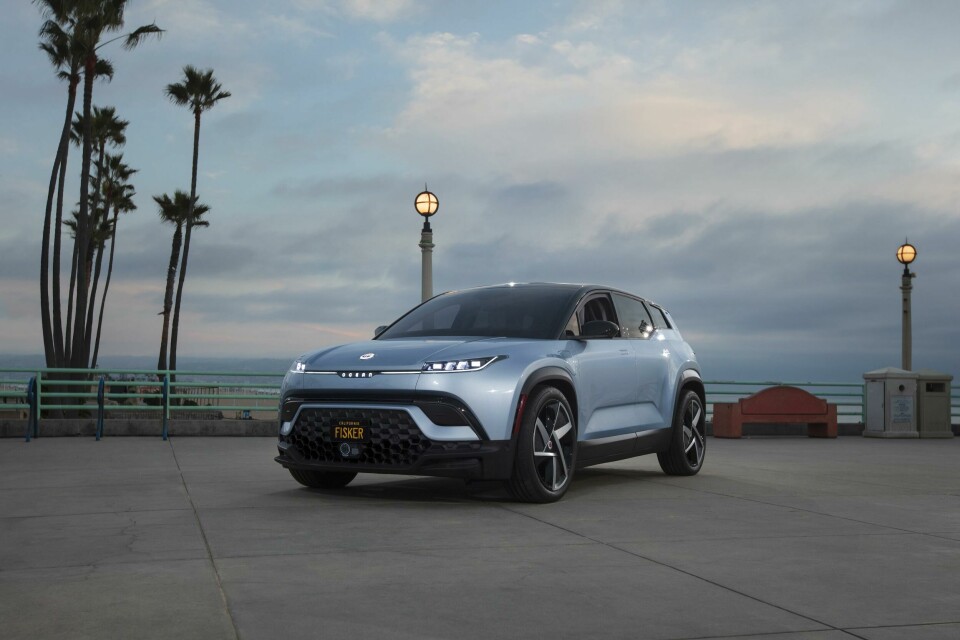Fisker reports loss of $762m in 2023, negotiates with OEM over strategic partnership
Fisker has reported a net loss of $463.6m in the fourth quarter (Q4) of 2023 and $761.9m for the year, with the carmaker calling it a “challenging year”, in part because of delays with suppliers. The OEM announced in the filings that it will cut its workforce by 15% and streamline operations.
The luxury EV maker said that it is in negotiations with a “large automaker” for a potential strategic partnership which could include an investment in Fisker, joint development of one or more EV platforms, and North America manufacturing. The company has not announced who the potential partner is and said the closing of any transaction would be subject to conditions. Back in 2020, Fisker signed a deal with Canadian contract auto-supplier Magna Steyr to build its Ocean SUV in Graz, Austria, allowing Magna a 6% share in Fisker, worth $3 billion at the time.

In its full year results for 2023, Fisker said it will need to seek additional equity or debt financing to continue operations, as the company’s current resources are insufficient to satisfy its requirements over the next year, causing it to have “substantial doubt about its ability to continue as a going concern”.
If this financing is not available, Fisker said it may need to decrease its planned level of investment in product development, and scale back its operations further, including further reducing headcount. It could also result in reducing production of the Fisker Ocean SUV, which could have an adverse impact on the firm’s financials, according to the results.
The company is currently in discussions with money lenders about a cash injection that would be used for vehicle production and the ongoing transition to a dealer-focused sales model. This Dealer Partner model, announced in January this year, has received over 250 expressions of interest from dealers in North America and Europe, with 13 dealers having signed agreements. Headcount reductions of 15% are predominately related to this change in sales strategy.
Fisker’s total revenue for 2023 was $272.9m, with revenue of $200.1m in Q4. Both of these revenues exclude a total of $44.6m of deferred revenue that will be recognised in future accounts. The carmaker’s gross margin for Q4 was -35%, with cash and cash equivalents totalling $395.9m as of December 31, 2023. In the same timeframe, the carrying value of completed vehicles in the carmaker’s inventory and raw materials was $530m.
In terms of production, in Q4 Fisker produced 4,789 units of Ocean SUVs and delivered 3,818 vehicles to customers. For the full year, the firm produced 10,913 Fisker Oceans and delivered 4,929 vehicles - a steep fall from the predicted 32,000-36,000 units it had forecast for the full year.
“[Last year] was a challenging year for Fisker, including delays with suppliers and other issues that prevented us from delivering the Ocean SUV as quickly as we had expected,” said Henrik Fisker, chairman and CEO, Fisker. “We also encountered unexpected headwinds in our efforts to establish a direct-to-consumer sales model in both North America and Europe at the same time.”
The CEO added that unanticipated challenges affected the business, including rising interest rates, a lack of skilled labour and identifying appropriate locations for the direct-to-consumer sales model to function effectively. The firm pivoted to the Dealer Partner model as a result. While the Dealer Partner model is seeing interest, Fisker added that the industry’s turbulence is a risk factor.
Looking ahead, the company has adjusted its outlook to a more conservative 20,000-22,000 Ocean SUV deliveries for 2024 – although this is still four times what the carmaker delivered in 2023. During the first half of this year, the company said it expects to generate cash from the sale of existing 2023 production vehicles that are largely paid for. It added that it expects a higher than usual cash contribution from Ocean SUVs that are produced and sold in the first half of this year as the company uses raw materials already bought and in its inventory.





